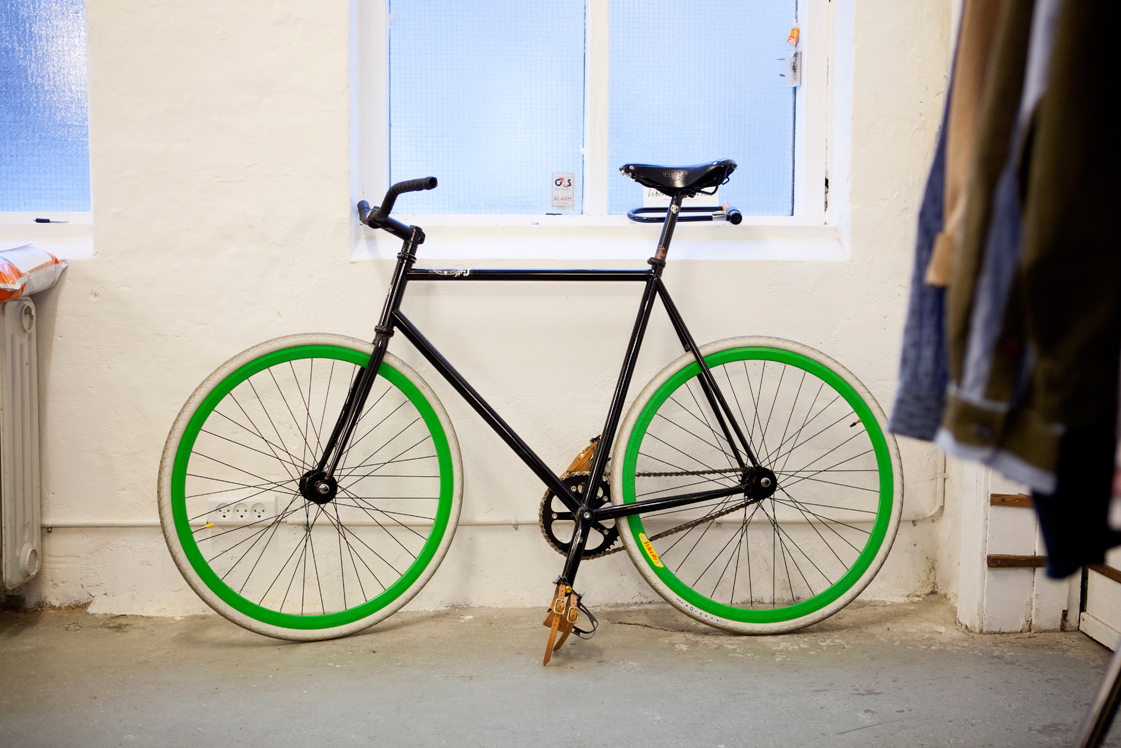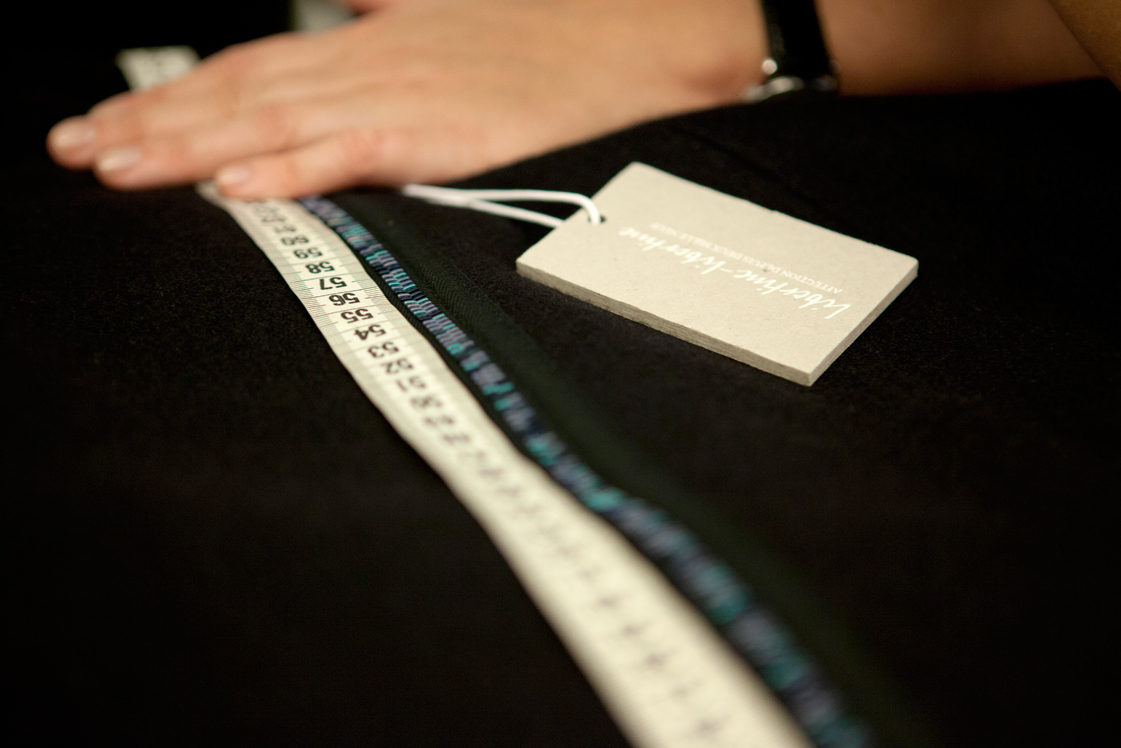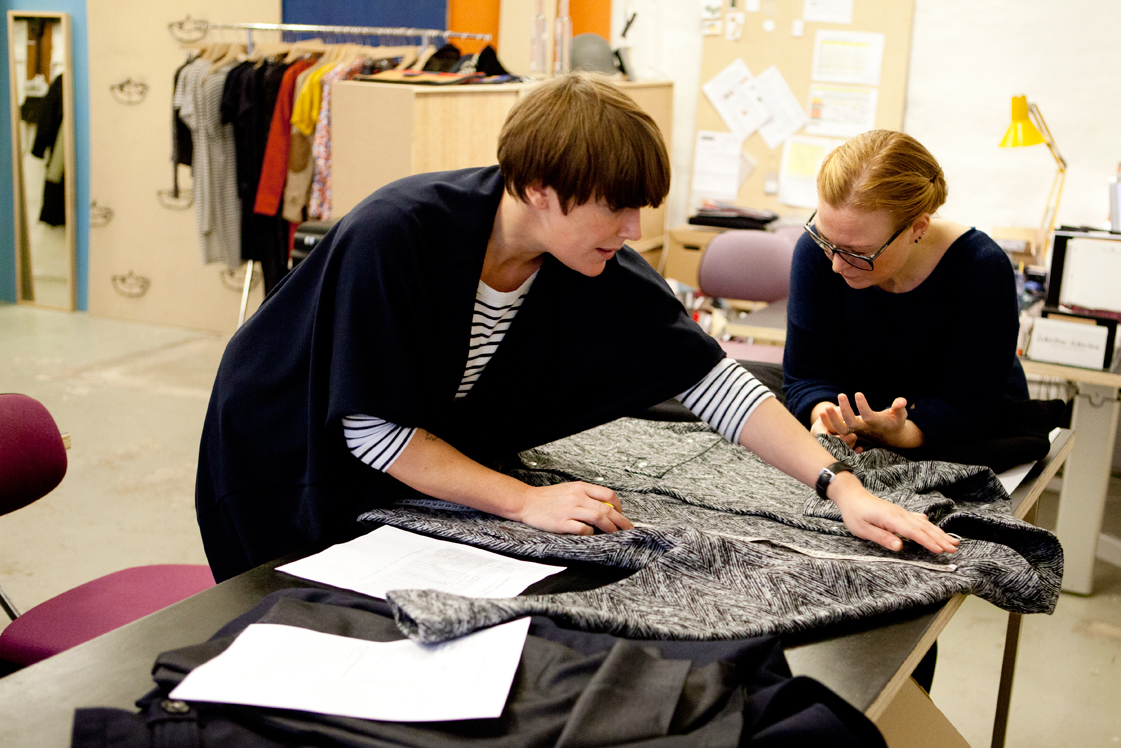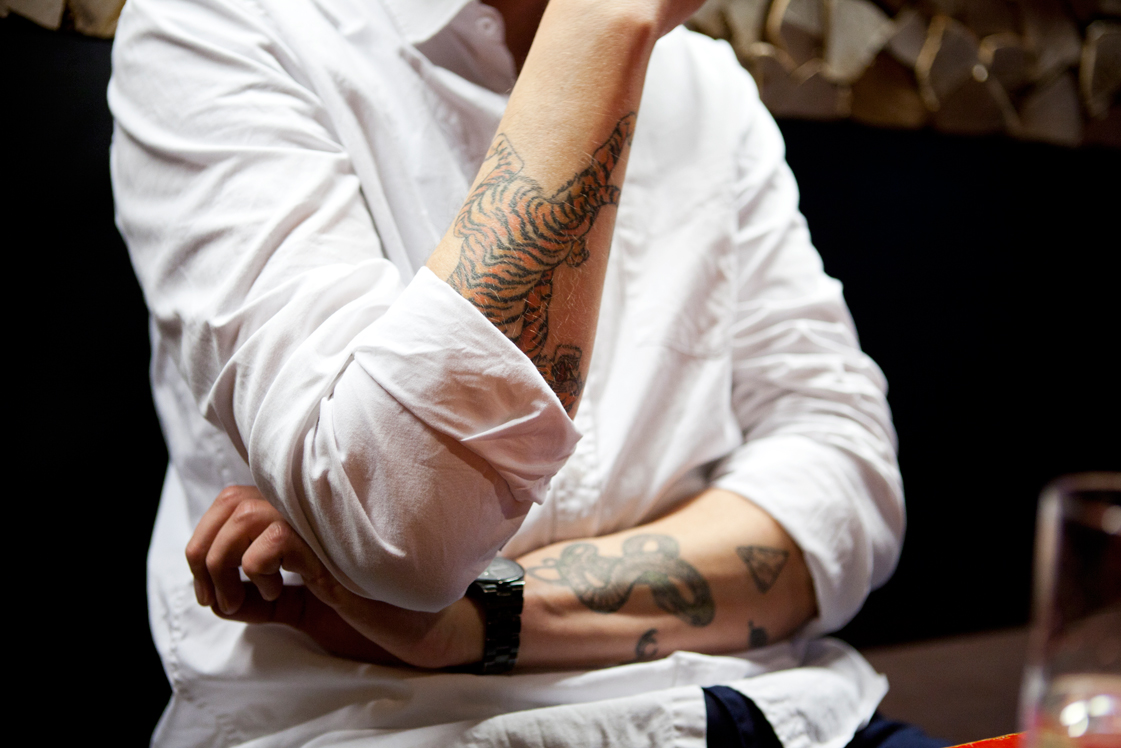In French, a libertine is a person with no moral restraint. Taking that naughty image and turning it on its head is the young label Libertine–Libertine from Copenhagen. Founded by Pernille Schwarz, Peter Munch Ovesen and Rasmus Bak – three enthusiasts who don’t care that Danish fashion design usually is more black, more serious and more expensive – it has been turning heads ever since its launch.
Rooted deeply in skate and punk culture, the brand manages to take this inspiration from the street and turn it into something more polished and classic.
Co-Founder Rasmus Bak talks with us about image, being Danish and road trips through Europe.























Can you tell us a bit about this space?
This used to be an old bodega where the guys working in the meatpacking district on the other side of the street used to have a beer after their shift. After the old owner died, this place stood empty for almost two years. Then we rented it, and now it’s our meeting area.
Your logo is very nautical. Can you explain a bit why that is or what it has to do with your brand?
The whole maritime approach is still the cornerstone of our designs. It has always been. In a strange way it has a lot of positive values attached to it.
Does it have anything with Copenhagen?
No, not really. But it represents our rather playful approach to the whole industry and our brand. It’s a great symbol for that. There’s also an extended version with a sparrow dancing on it. We don’t like to be stuck with just one logo. We play around all the time with small signs that define the energy behind a collection. It’s really important to us that the soul of the brand is reflected in the logo. We’re moving fast at the moment, and I think it’s nice to have something visual to attach it to. It’s like a tattoo.
To remember a place in time?
Totally! It works as such a good reminder for us. Something that you only realize in the rear-view mirror when time has passed.
But unlike some tattoo you hate later, you won’t regret any of your logo designs?
No, not at all. We know where we’re going, we know what we stand for and what our main inspirations are. So we’d never do something that we won’t like next season.
So what does Libertine–Libertine stand for?
We always say we are inspired by bright city lights and wild shores. We have roots in city life, but we’re also connected to the skate and surf scene. That’s where our roots are. We’ve always been interested in skating, music and surfing, and now we have a more classic and grown-up approach to it. We don’t want to be a skate brand, but it’s important to us that you feel that chaotic energy in some subtle way.
Would you say your designs are Danish? That you are a Copenhagen brand?
Of course we feel like a part of Copenhagen. It’s actually a really versatile city;,you can get away with a lot. And people are really interested in local brands, so it’s a nice place to experiment. We feel freedom here. But our approach to fashion is not strictly Scandinavian minimalism. There are a lot of good players here that do their stuff well, but personally, I am super bored with it.
When we started out we were really fed up with the whole minimalistic black, white and gray thing, and we knew we wanted to avoid that. So we distinguished ourselves from our competitors by not including black, for example. For us, that is a way to stand out here; to not include the skinny jeans, to not include the suits, to not include these elements. In Scandinavia, all the collections are built up in the same way. We didn’t want to have anything to do with that.
Any idea why black is such a big part of Nordic fashion design?
It’s a business decision. But we didn’t worry about that. The first collection we did consisted of just twenty hangers. Just some really clean shirts and we built it up from that. We didn’t want to blow it out of proportion, and we still feel like that. We want to be really honest in every step we take on our way. Be do-ers instead of pretenders. It’s fine to say that you are interested in art, but have you taken any steps towards the art scene lately?
It’s so easy to put things like that down in your ‘About’-text and just pretend that you are a part of all this. We believe in taking small footsteps all the time. Leave small marks. Be really rich in initiative. Spend some money on projects that don’t give you anything back besides a good, fun experience. It will always come back to you full circle. And we like to have something to waste our energy on apart from fashion from time to time.
You’re three people doing the brand. Tell us about your different tasks.
Pernille is the head of design. She has a background in designing for other brands and that’s where her education is. Peter does the sales. Since we’ve grown so much, he now handles the back-office, logistics, and the financial side. He keeps things in order here, which is a big job. We do everything ourselves, the invoicing, the delivery, packaging. It’s important for us to be hands on, so we can be flexible and prioritize. I do communications and sales as well as product development.
Are you three best friends?
Pernille and I are a couple actually and we had known Peter for years when we started this, even though he wasn’t a close friend. He’s a really likeable guy, and he stands for a lot of good things and values; a high morale. So this might be an uncommon constellation, but it works for us. We want that small but extremely strong core. We don’t want all the risk.
But do you see your label growing?
Of course we will grow. We already need more people. But my dream isn’t that office with 50 employees. Growing too fast can sometimes kill the soul of a brand. It sounds dreamy what I’m saying here, but I really mean it. This project has been launched out of the ambition to create an ideal life for us. And we are getting there. We can live off what we love now. We travel a lot, we meet great people, we party a little bit, we use our heads. We earn money to do exactly that.
Sounds great.
Yes. We have 20 or 30 years ahead of us. We aren’t in a rush. We are patient. And I think that is quite an important virtue these days. And sometimes, saying ‘enough is enough’ for the time being is the best you can do.
Have you always lived in Copenhagen? What do you like about the city?
I grew up in Jutland, close to Aarhus. In Copenhagen, you have freedom. I don’t think any of us could live here if we didn’t travel so much. But it’s a nice place to come back to. You have an openness here that is really hard to find anywhere else, and a lot of possibilities. It’s the Danish mentality, I guess. It’s possible to slack and get by for a while. That is way harder in other big cities.
Tell us how Libertine–Libertine started.
In the beginning, we worked from our apartment. Peter came over every morning at nine, and our warehouse was at his place on the fifth floor. It was exhausting to carry up all the boxes. But every month we thought: “Let’s save the rent, that will keep us on the road for a week.” If you save one thousand euros like that, that’s five or six nights in a hotel and some gas for the car. We took meetings all over the place and laid our European foundation like that.
The normal way of starting a fashion business is to establish yourself in your home market and then grow. For us, it was more important to get out there. Fuck it, if we have to drive 1000 kilometers for 2000 euros, it’s always worth it. It pushes the boundaries a bit of what you can actually do as a brand. That momentum is important to keep, and we have kept it ever since. Just do stuff, instead of thinking strategically and writing emails, just go and feel it instead. Experience it yourself instead of just reading about it.
This seems to be working out for you.
It does! But we also had to put so many hours in it. We drove so many kilometers all the time. But it was always worth it. Travel is a big part of my life and it’s a big part of the brand as well. We like the whole hobo and Kerouac thing. It’s kind of an inspiration. It’s such a cliché to say: “Live the dream!“ But when we started out, we felt exactly like that. We even had a dogma saying that the collection can never be bigger that what fits in two bags, so we can always throw it in a car and just drive. Now, it’s not interesting anymore to just have two collection bags anymore, it would just be boring to develop such a small amount of styles. But we still try to keep up the concept, and the spirit is still very much rooted in Libertine–Libertine.
Traveling as a way of life?
I have always found comfort in the awareness that that is possible. I grew up in a small city, and I can still recall that emotion of being trapped. Maybe you don’t want to go out on a Monday night, but it’s really nice to know that you could if you wanted to. It’s good to know that you could get out of your apartment and just do stuff.
Thank you for the nice talk, Rasmus! Make sure you check out the website of Libertine-Libertine for more infos and very nice imagery.
Interview: Anna Peuckert
Photography: Søren Jepsen
